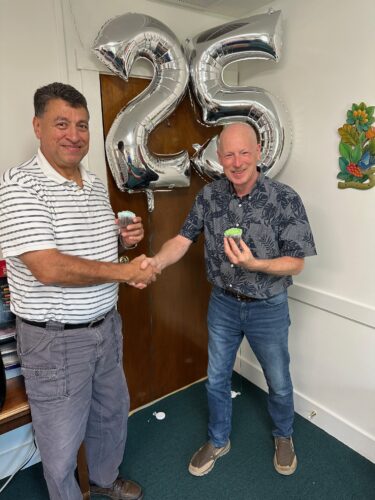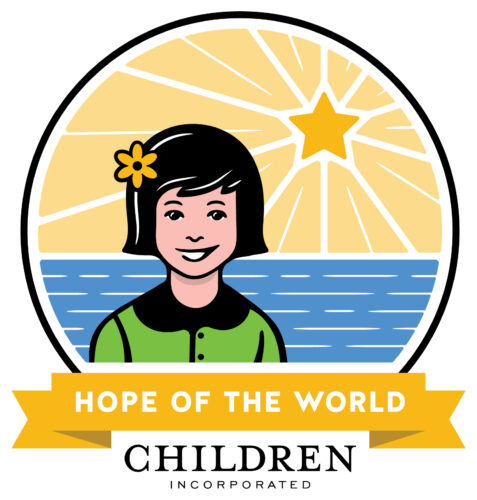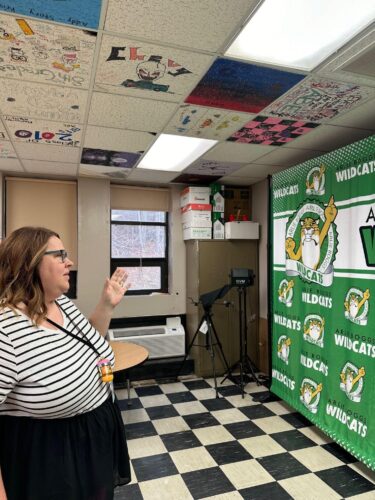In October 1964, Mrs. Jeanne Clarke Wood started a non-profit children’s organization called Children Incorporated. What began with just 95 sponsored children in Guatemala quickly escalated to helping 1600 children in 10 countries within just two short years. Today, Children Incorporated has sponsorship programs in 20 countries worldwide and provides tens of thousands of impoverished children with clothing and school supplies, medical care, and many other types of assistance.
Thanks to our donors, schools, dormitories, clinics, and housing developments have been constructed in various locations, and our special funds help to feed hungry children, support families and communities in emergencies, and offer our volunteer coordinators the vital support they need throughout the year.
We thank every one of you, our incredible supporters, for being a part of the last 60 years of our journey helping children in need all over the world. Our Fall 2024 Newsletter is dedicated to the memory of our founder, Mrs. Jeanne Clarke Wood, and to the history of this special organization. Thank you for your support. We couldn’t do our work with you.
Our Fall 2024 Newsletter is dedicated to the memory of our founder, Mrs. Jeanne Clarke Wood, and to the history of this special organization. Thank you for your support. We couldn’t do our work with you.
A Timeline of Our Six Decades of Work
October 1964 – The first meeting of the Board of Directors for Children Incorporated is held.
November 1964 – The first appeals for funds were mailed to Mrs. Wood’s contacts; a goal of shipping 10,000 pounds of clothing to Guatemala was met.
January 1965 – Mrs. Wood and her small fledgling staff secure funds to help 95 children in Guatemala, seven
children on American Indian reservations, and six children in Lebanon. These become Children Incorporated’s first sponsorships.
December 1965 – Children Incorporated sponsorships grew from 108 in January 1965 to nearly 800 by the end of the first year. 789 children in 20 affiliated sites in 8 countries (Africa, Japan, Mexico, India, Latin America, Lebanon, Syria, U.S.) have been matched with sponsors.
October 1966 — More than 1600 children now have sponsors, and Children Incorporated has expanded its reach to 35 affiliated sites in 10 countries.
April 1967 – 2,335 children are sponsored in 45 sites in 11 countries; Children Incorporated helps its first child to attend college.

Mrs. Wood traveled with Children Incorporated and often wrote about our work for our newsletters, which were accompanied by photos of children in our program, such as this one.
November 1971 — Children Incorporated continues to grow. At this point, 7,750 sponsored children are in 113 sites in 18 countries. For the first time in its history, over 2,000 new sponsors signed on in just one year.
May 1972 — Mrs. Wood receives a commendation from President Richard Nixon for her charitable work with impoverished children and families.
September 1974 – Mrs. Wood’s name appears in the 38th edition of Who’s Who In America.
December 1983 – An article on Children Incorporated appears in Good Housekeeping magazine, drawing much positive attention to the benefits of child sponsorship.
October 1994 – Children Incorporated celebrates 30 years of service to children around the world.
January 1997 – Dr. Richard Carlson’s best-selling book, Don’t Sweat The Small Stuff, is published. In it, Dr. Carlson mentions Children Incorporated as his charity of choice. Children Incorporated gained over 3,100 new sponsorships as a result of the mention in Dr. Richard Carlson’s book.
July 2004 – Mrs. Wood steps down as President of Children Incorporated after forty years of loyal service. Her successor is Marian Cummins, a long-time employee.
October 2005 – After operating out of Mrs. Wood’s home for over 40 years, Children Incorporated relocates to its first official offices on Dover Road in Richmond, Virginia.
November 2005 – Children Incorporated begins working locally, creating partnerships and establishing sponsorship programs within several Richmond Public Schools; the organization’s Inner-City division is born, with work in Detroit, Michigan, New Orleans, Louisiana, and other U.S. cities to follow.
January 2006 – Our founder, Mrs. Wood, dies at age 89. Her legacy lives on through Children Incorporated.
January 2011 – Children Incorporated’s third President, Marianne Vermeer, begins her 14-month tenure with the organization.
April 2012 – Ronald H. Carter, who had worked with the U.S. Programs division since coming to Children Incorporated in 2003, is appointed as the fourth President and Chief Executive Officer.
October 2014 – Children Incorporated celebrates its 50th anniversary and anticipates many more years of service to children both locally and globally!
We thank every one of you, our incredible supporters, for being a part of the last 60 years of our journey helping children in need all over the world.
April 2016 – Children Incorporated launches its On the Road blog series, which follows our sponsors and donors along with our program teams as they visit our affiliated sites around the world.
January 2017 – Children Incorporated moves from its home on Dover Road in Richmond, Virginia, to North Chesterfield, Virginia.
April 2022 – Children Incorporated launches its Stories of Hope blog series, in which readers are shown their donations’ impact on education, community support, emergency relief, and health and well-being.
May 2024 — Children Incorporated introduces our Guardian Circle, a giving circle opportunity that allows our donors to support special projects around the world.
October 2024 – Children Incorporated celebrates 60 years as an organization by establishing Founder’s Day, which will be celebrated on October 19th.
Congratulations to Our Amazing Staff
2024 is a year to celebrate so many incredible milestones at Children Incorporated, including the 40th work anniversary of our Director of U.S. Programs, Renée Kube, and the 25th work anniversary of our Director of International Programs, Luis Bourdet.

Luis Bourdet is pictured with Ron Carter during Luis’ 25th work anniversary celebration at our office.
“I am very blessed to work with such a wonderful and dedicated staff at Children Incorporated. Over the years, I have been thoroughly impressed with the quality of people who have been employed here. From those who have stayed for many years to others who have had shorter tenures, I have admired and respected their desire to help children and families better and improve their lives.
The staff of Children Incorporated is a good group: dedicated, caring, honest, and real people who truly want to make a difference in the world. They are my co-workers, yes, but we are also family in many ways. I love and value each one of them.”
– Ron Carter, President and CEO
“I started working at Children Incorporated in 1984. My office equipment and supplies included an IBM electric typewriter and carbon paper; a facsimile machine was state of the art. In 2024, I will use a PC, and faxing will be quaint.
Over the past 40 years, I have done different jobs for the organization. I have chosen to stay and grow with Children Incorporated because of our organization’s important mission and our connection to our donors, staff, volunteer coordinators, and the children we serve. I love working with my head and my heart and with amazing people.”
– Renée Kube, Director of U.S. Programs
“It has been an immense privilege to dedicate years of my life to this remarkable organization! From the very beginning, I have been deeply committed to our mission of supporting children in need and empowering them through education. The belief that every child deserves the chance to envision a brighter future has been the driving force behind my work.
Witnessing the transformative impact of our affiliations, our special projects, and our support has been truly inspiring. Countless children have achieved remarkable strides, not only improving their own lives but positively influencing their communities as well. I am profoundly grateful to be a part of this mission and contribute to the positive change we are creating together with our donors and sponsors.”
– Luis Bourdet, Director of International Programs
READ THE FULL NEWSLETTER




 She also loved to have fun, though she was earnest about the company’s work. She had a telephone on her bedside table, and she often answered incoming calls from sponsors late into the evening. If the work line rang, no matter how late the call, Mrs. Wood picked up the receiver. Long-time supporters of the organization recall speaking with Mrs. Wood late at night, yet she did not mind interrupting her time. Staff often came into work mornings to find little notes written in Mrs. Wood’s pen, advising them of such calls with instructions on how she wanted them to follow up, always keeping the sponsors’ needs paramount. She was a delight to work with and is missed.
She also loved to have fun, though she was earnest about the company’s work. She had a telephone on her bedside table, and she often answered incoming calls from sponsors late into the evening. If the work line rang, no matter how late the call, Mrs. Wood picked up the receiver. Long-time supporters of the organization recall speaking with Mrs. Wood late at night, yet she did not mind interrupting her time. Staff often came into work mornings to find little notes written in Mrs. Wood’s pen, advising them of such calls with instructions on how she wanted them to follow up, always keeping the sponsors’ needs paramount. She was a delight to work with and is missed.